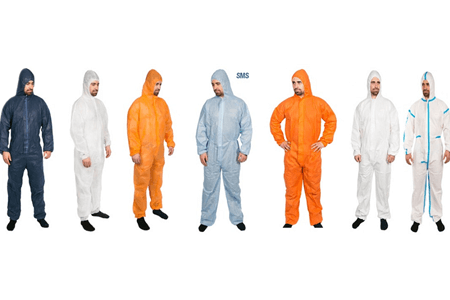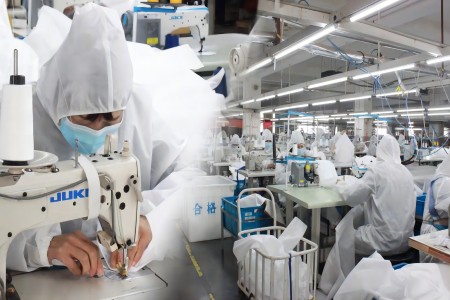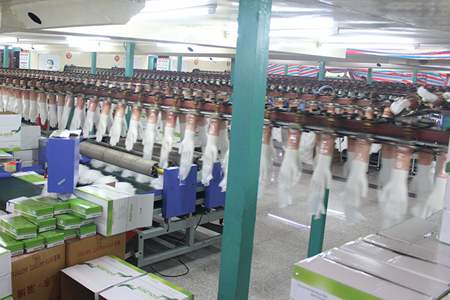2023/9/21

Microporous Coverall Types
In the realm of personal protective equipment (PPE), microporous coveralls have emerged as a crucial tool for safeguarding individuals against various hazards. From healthcare workers to industrial personnel, these coveralls offer unparalleled protection and comfort. This article aims to provide a comprehensive overview of microporous coverall types, their features, and applications.
1. Understanding Microporous Coveralls
Microporous coveralls are made from a specialized non-woven fabric that provides an effective barrier against particulates, liquids, and chemicals. The unique structure of microporous materials allows for breathability while maintaining high levels of protection. These coveralls are typically used in industries such as healthcare, manufacturing, pharmaceuticals, and laboratories.
2. Types of Microporous Coveralls
a. Standard Microporous Coveralls
Standard microporous coveralls are designed to offer basic protection against particulates and liquids. They are commonly used in environments where the risk of exposure to hazardous substances is relatively low. These coveralls are lightweight, affordable, and suitable for tasks that require minimal physical exertion.
b. Microporous Coveralls with Hood
Microporous coveralls with hoods provide additional protection for the head and neck region. They are ideal for tasks that involve overhead work or potential exposure to airborne contaminants. The incorporated hood ensures that the wearer's entire body is shielded from hazardous substances, making them indispensable in environments where respiratory protection is critical.
c. Anti-Static Microporous Coveralls
Anti-static microporous coveralls are specially designed to prevent the buildup of static electricity. They are commonly used in industries that deal with sensitive electronic equipment, explosive materials, or flammable substances. These coveralls minimize the risk of electrostatic discharges, ensuring both personal safety and the protection of valuable assets.
d. Chemical-Resistant Microporous Coveralls
Chemical-resistant microporous coveralls are engineered to withstand exposure to a wide range of chemicals. They provide an impermeable barrier against hazardous liquids, protecting the wearer from potential skin irritations or chemical burns. These coveralls are commonly used in chemical manufacturing plants, laboratories, and industries where workers are exposed to corrosive substances.
3. Key Features of Microporous Coveralls
a. Breathability: Microporous coveralls allow for air circulation, preventing heat buildup and excessive perspiration. This feature enhances comfort and reduces the risk of heat-related illnesses during prolonged use.
b. Durability: Microporous coveralls are designed to withstand demanding work environments, ensuring longevity and cost-effectiveness. Reinforced seams and robust materials provide resistance against tearing, extending the life of the coveralls.
c. Elasticity and Flexibility: Microporous coveralls offer a comfortable fit, allowing for ease of movement and flexibility. They are available in various sizes to accommodate different body types, ensuring optimal protection without compromising comfort.
d. Disposable or Reusable Options: Depending on the specific requirements, microporous coveralls are available in both disposable and reusable forms. Disposable coveralls are convenient for one-time use, while reusable coveralls can be decontaminated and used multiple times, making them more environmentally friendly.
4. Applications of Microporous Coveralls
a. Healthcare: Microporous coveralls are extensively used in healthcare settings to protect medical professionals from exposure to infectious agents and bodily fluids.
b. Manufacturing and Industrial Settings: Microporous coveralls find applications in manufacturing and industrial environments to safeguard workers from particulates, chemicals, and other workplace hazards.
c. Laboratories: Laboratories dealing with biological or chemical substances require microporous coveralls to minimize the risk of contamination and protect researchers from potential hazards.
d. Cleanrooms: In cleanroom environments, microporous coveralls help maintain sterile conditions by preventing the introduction of particles or microorganisms.
Conclusion
Microporous coveralls are essential PPE that play a vital role in protecting professionals across various industries. Understanding the different types and features of microporous coveralls allows individuals to make informed decisions when selecting the most suitable option for their specific needs. By prioritizing safety, comfort, and durability, professionals can ensure optimal protection against workplace hazards.




 WhatsApp
WhatsApp
Send us your message
You can send an email asking for the price and detailed information of this product. We will reply you as soon as we receive your email